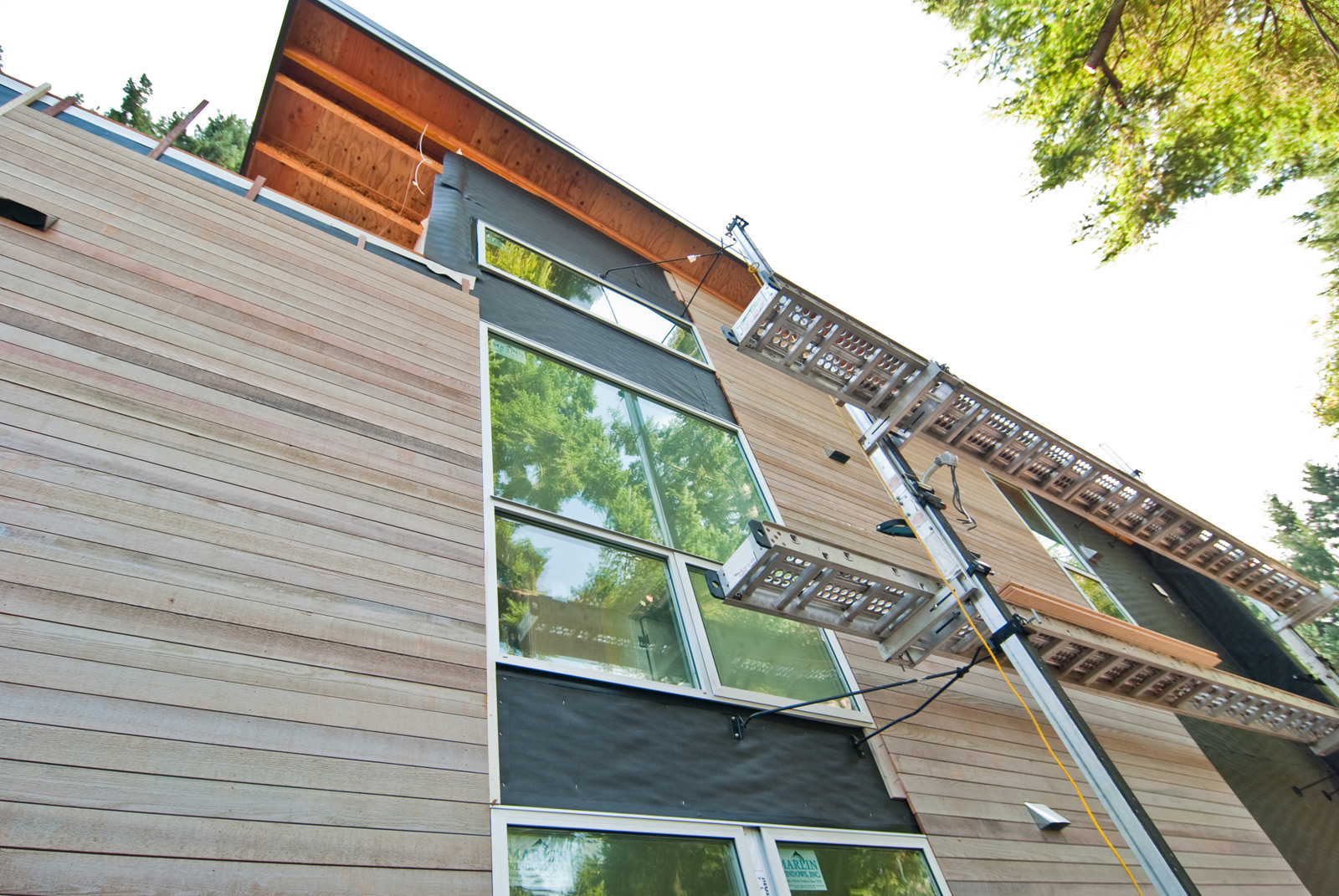
[Photo by BUILD LLC]
We’re making excellent progress on the BUILD Case Study House and it’s a great opportunity to take a peek inside. Cabinet boxes were recently delivered to the site; shipped straight from the hard-working team down at the Special Projects Division cabinet & furniture shop. We’ve blogged about our cabinet division that has served as our own laboratory for refining cabinetry and special components for our projects. We’re unusually excited about this particular cabinet package because of the technology they’re built with. Behind the gorgeous wood finish of these cabinets will be a whole lot of thinking and engineering from our special relationship with the Blum company, along with our years of exploration in materials, details, assembly and finished use of our cabinet packages.

[Jason hard at work on the cabinet box install, Photo by BUILD LLC]
This result will provide better performance, superior function and space utilization, as well as harmonious and timeless appearance when it’s done (and there will be plenty of time to review the aesthetics later). But this post is about how the kitchen performs. We’ve been working closely with the folks at Blum for some 4 years on our cabinet packages and this project is a culmination of SPD’s efforts to merge beautiful cabinets with seamless function. If you’re a regular reader of the BUILDblog, you know that we foster long-term relationships with everyone invested in the outcome of a great project. We’ve found that working closely with everyone from the suppliers to the craftspeople produces exceptional results and this kitchen is a prime example. We’re also not very keen on keeping secrets and we like to share good info when we find it, so here goes.
One of the big game changers on this project has been the Dynamic Space concept developed by Blum. They’ve gone far beyond simply producing excellent hardware (we’re big fans) and have designed a system of strategies and studies around effective kitchen design. The idea is to establish uninterrupted workflow in the kitchen, which allows the end users to be unwittingly efficient. It’s that measure-twice-and-cut-once philosophy that resonates with us — rigorously researched and applied to the room we all spend most of our time in — the kitchen. Blum studied every aspect of kitchen use, then produced the hardware that best optimizes the design. If you’re anything like us, and enjoy cooking and being in the kitchen, it means being “in the zone.” Everything is fluid, there’s no wasted time, no wasted space, and no wasted steps. Design-wise, it means that everything has a predictable and easily accessible place in the kitchen. In a nutshell: kitchen harmony.

[Photo credit: Blum]
An important part of Blum’s strategy is separating kitchen storage needs into 5 zones:
1. Consumables (edibles),
2. Non-consumables (food serving and storage)
3. Cleaning
4. Preparation
5. Cooking
We love organizational systems and this list of 5 simple categories is right up our pragmatic alley. Once all of a kitchen’s items are separated into these categories, the kitchen layout becomes much more effective (and easier to design, quite frankly).
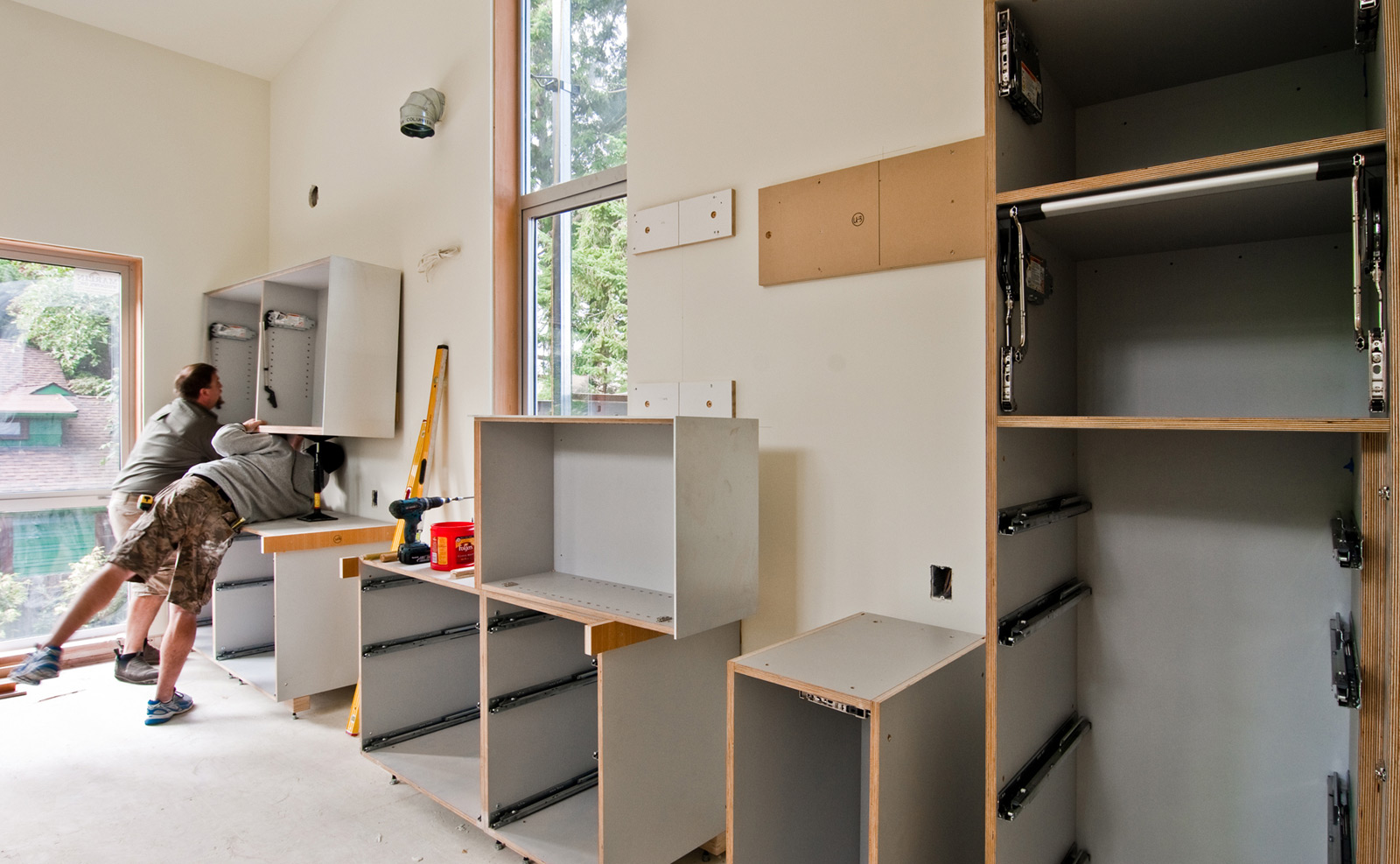
[Bart and Jason installing upper cabinet boxesl, Photo by BUILD LLC]
With an organizational strategy in place the kitchen design can put the right pieces of hardware to work in the optimal locations. The Blum studies have put several key ingredients into place for kitchen detailing.
A big one for us pertains to the lower cabinets, where drawers work much more effectively than doors and shelves. It’s dark in there, you can’t see very well, and things always get lost at the back. Lower drawers allow full access to the entire cabinet box with excellent visibility. We outfit the drawers with Tandem plus Blumotion soft close drawer runners for full extension drawers allowing access to every square inch of storage space.
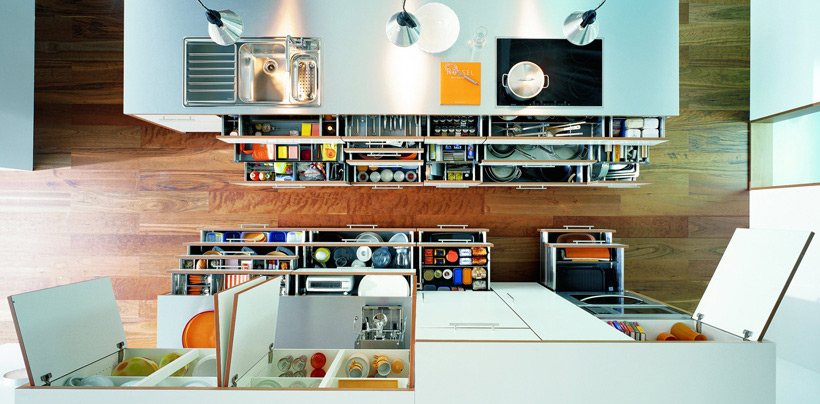
[Photo credit: Blum]
At upper cabinets, the challenge is accessing stored items without the doors getting in the way. Once again, traditional casement doors don’t always work well for every application. We use a variety of lift mechanisms like the bi-fold lift, up and over lift, lift up, and stay lift systems that get the doors out of the way easily and cleanly. The hardware is also entirely concealed inside the cabinet box and allows for a clean look on the cabinet face.
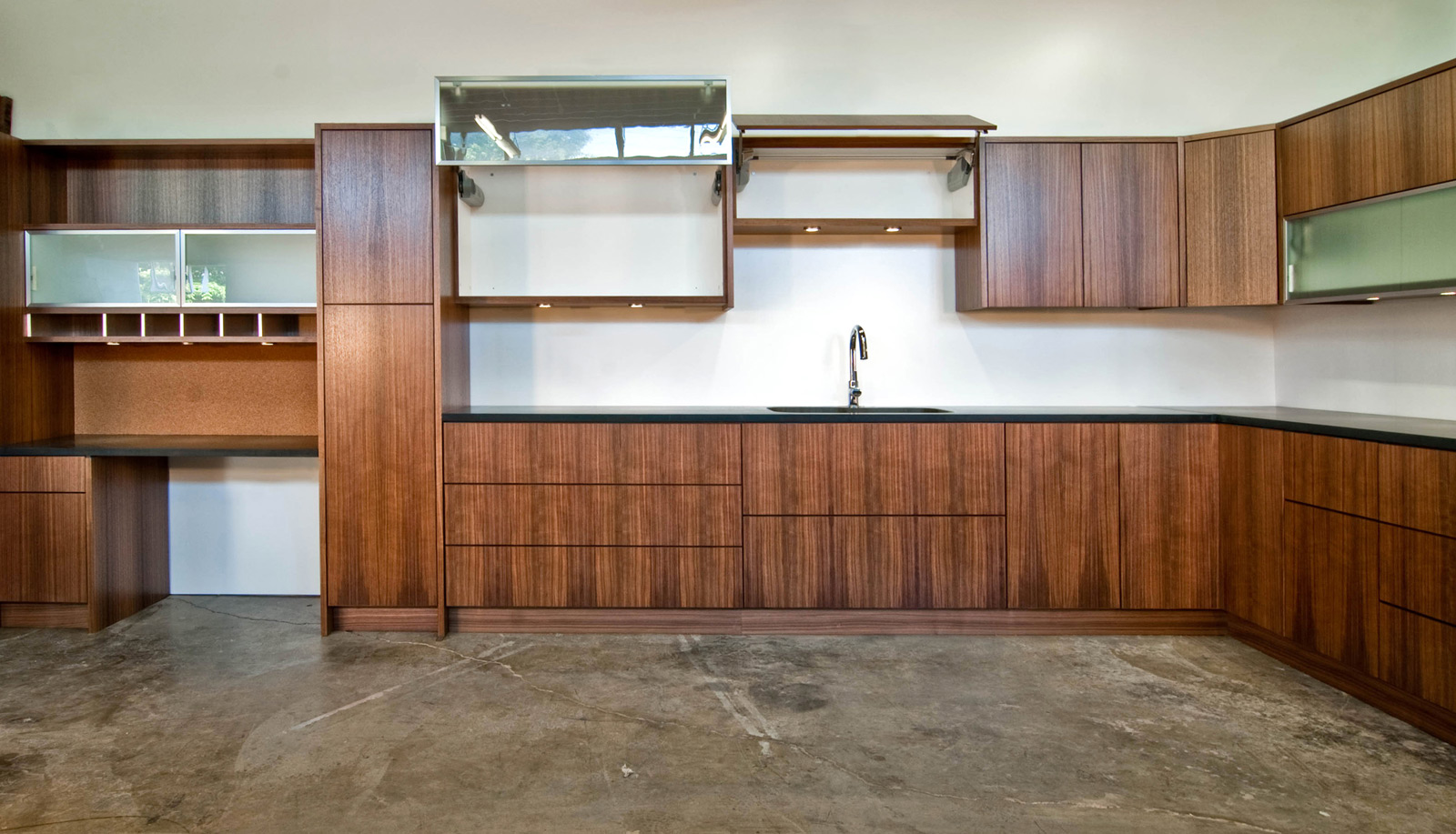
[Photo by BUILD LLC]
The next level of design detailing may very well be our favorite –the Orga-Line adjustable organizational system for drawers. For people who like things organized neatly and beautifully, this is design bliss. We like the stainless steel finish on the organizers as it matches the adjacent hardware. The line offers features like removable foil/wrap dispensers and spice racks which just fuels our organizational fire.

[Photo by BUILD LLC]
The studies at Blum have helped produce design strategies for kitchens that literally last a lifetime. The applicable ergonomics of a kitchen change with our aging bodies and Blum actually developed an aging suit to help design and test kitchen performance relative to aging. This has led to technologies like the Servo Drive system which automatically opens and closes doors and drawers with a light touch to the cabinet face. We’re using limited Servo Drive system hardware on this project, as we did previously, in specific locations that want to be accessed by simply touching the face, rather than grasping a handle (think soiled hands while preparing food).
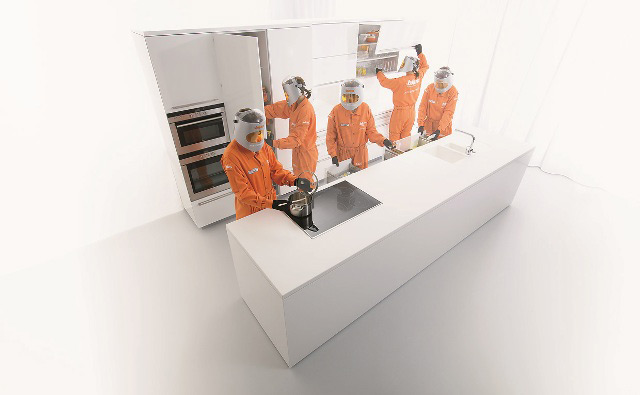
[Photo credit: Blum]
We’re lobbying to get our hands on the Blum Age Explorer suit to do a full test drive on the performance capabilities of the Case Study House kitchen and we’ll have full coverage of the event. It should be a hoot.

[Bart and Jason aligning the upper cabinet boxes, Photo by BUILD LLC]
Want to join us for the Case Study Open House coming up in November? Jump on our twitter feed and stay tuned for more design, strategy and details.
Cheers from team BUILD





